

The single expanded beam can be aimed to hit the holographic plate at an appropriate reference angle, and an object placed in a position so that it can be seen through the holographic plate and also be lit up by the rest of the beam. This was one of the first holograms that I ever saw, thanks to Dr. Tung Jeong, at a Society for Photographic Education conference in October 1979.
He made one of these holograms by spreading the laser beam and directing it to skim across the top of an optical table, laying the stuff in his pocket on it, (not very artistic, he would comment, but shows that the hologram was made on the spot), and clamping a holographic plate at the end of the junk, opposite the laser. Light skipped off the object, and some of the lightwent directly to the holo plate.
Here are a couple of set ups of this recording scheme. The first one shows the recording of the proof of concept hologram, 60 centimeters of dice extending back from the film plane.
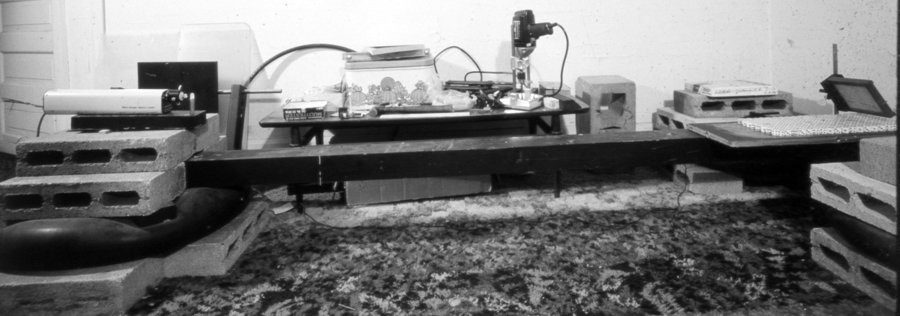
In this close up, the bottom half of the laser beam skips off the dice, reflected into the film holder, while the top part of the spread beam impinges directly onto the film as the reference beam.
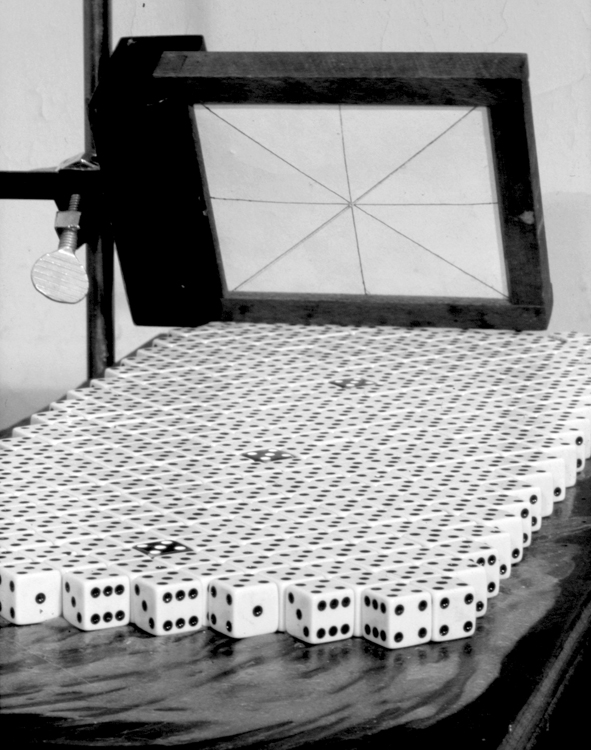
And here is the reconstruction of the image, as seen through the plateholder:
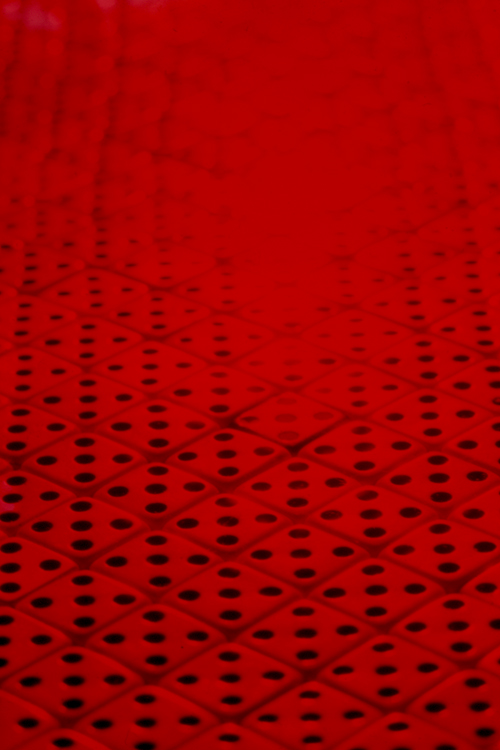
This proof of concept hologram is called "Doug's Dice", for Douglas E. Tyler, who used this set up to make some of the most interesting pieces of holographic artwork ever! See below.
A fun trick for this set up with a tip of the hat to Fred Unterseher and Bob Schlesinger as described in their Holography Handbook, is to holograph a piece of aluminum foil that had been crumpled up and unfolded. Viewed with white light instead of a laser, the random specular highlights make for some percolating rainbow displays!
White light viewing is the key to Doug Tyler’s success with his “Space Louvers” series. When he was a student at Gallery 1134, he asked the teacher, John Hoffmann, if he thought that this recording scheme could be used for artful purposes. Of course John said he thought not, but Doug proved him wrong, as one can see in the little gallery shots below.
Most of the holograms are about 12 by 18 centimeters, (5” by 7”), collaged into final pieces about a meter by 1.2 meters (3’ by 4’). (That is yours truly in the photo give some idea of scale of sizes of the pieces.)

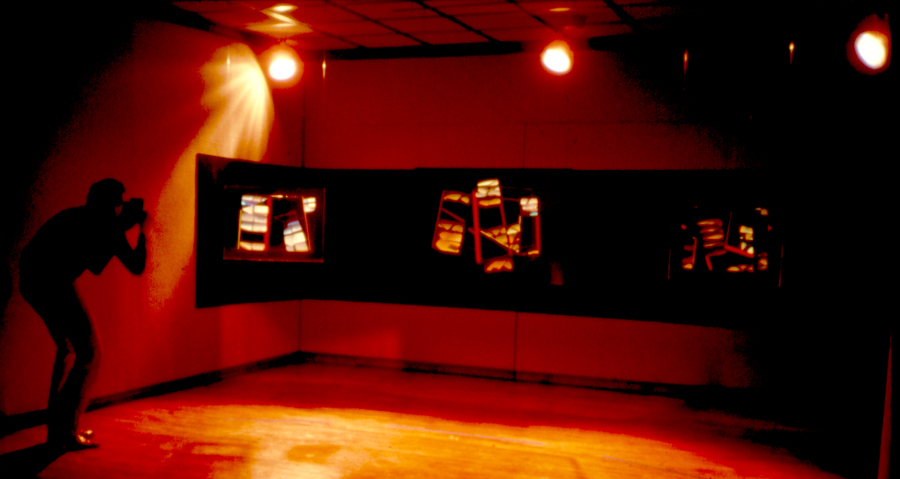



These images were from a show in Muskegon, Michigan in 1985, and some of the same pieces were shown at the Pompidou Center in 1987. The objects, pieces of cardboard, extend about 30 cm behind the film plane, appearing almost pure white near the film where the dispersion angle is small, but they radiate into rainbows at their distal ends. Sometimes a shadow is cast by wires onto the object. Sometimes the object had moved during exposure, but it just adds to the fun. Formaline tape delineates the shapes. Sheer genius!
Although the initial presentation of this recording set up was indelibly embedded in my mind as a deep scene set up, with a top reference, as illustrated with all the holograms above, it can also be used in a side reference mode. The reference beam comes in at the desired angle, and the object is positioned directly in front of the plate, tilted to reflect the rest of the light to the plate.
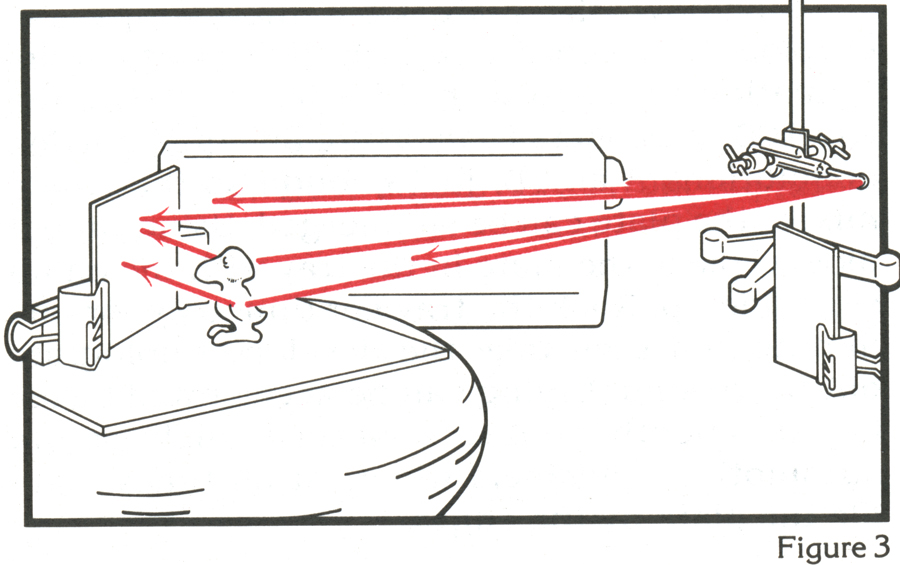
(From Laser Holography, Experiments You Can Do...From Edison, by Tung Jeong, 1987)
This variation has its limitations in lighting the object, but has a high success rate, as there is only the object and plateholder to keep stable. Litiholo shows this as their default set up, as in this clever example.
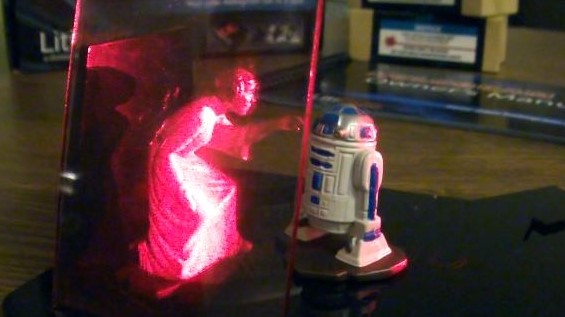
Here is the classroom handout I had written for making the Deep Scene set up in the sandboxes of Gallery 1134, with step by step instructions. The coolest version of this hologram was made by a young lady whose name is lost to antiquity, but you could see footprints extending from the back of the laser illuminated area up to the plate, where you could see the back of the Pink Panther, who evidently was walking through the sandbox desert.
This is the classroom handout that was written for the metal table of the Beginning Holography class at the School of the Art Institute of Chicago.
<back PROJECT 2: Single Beam Transmission, Deep Scene next>